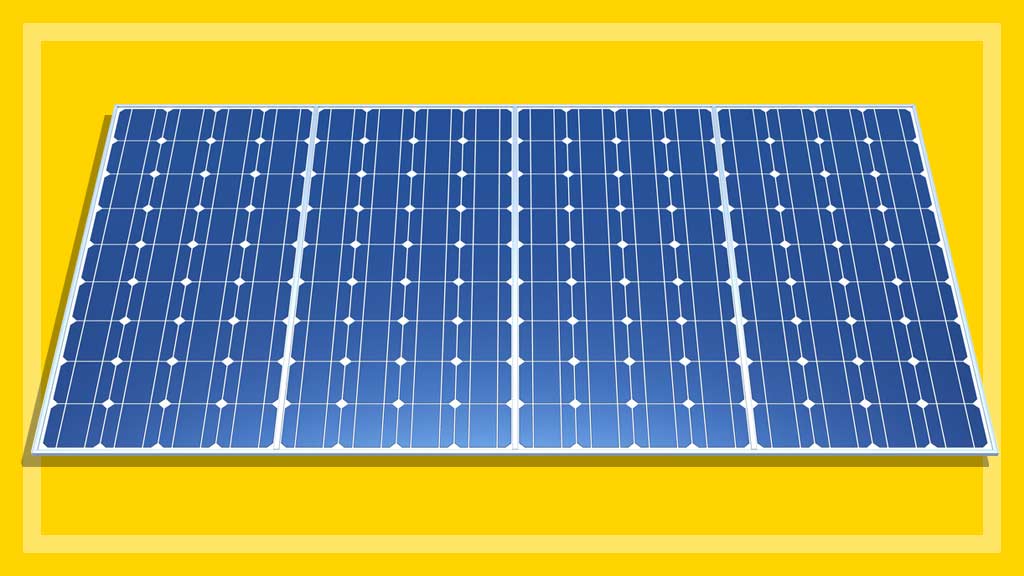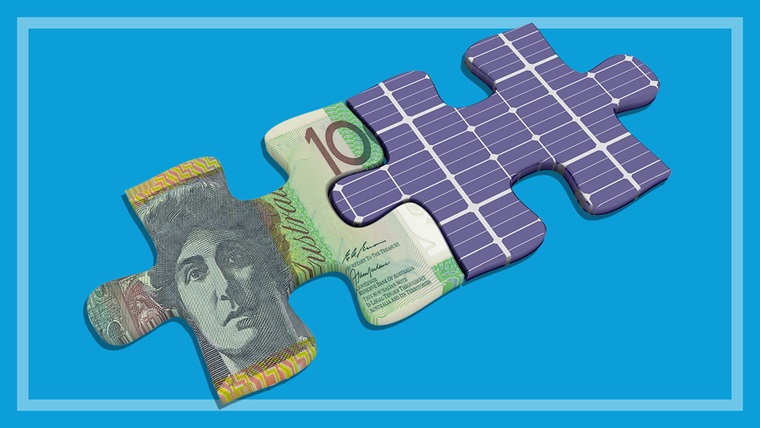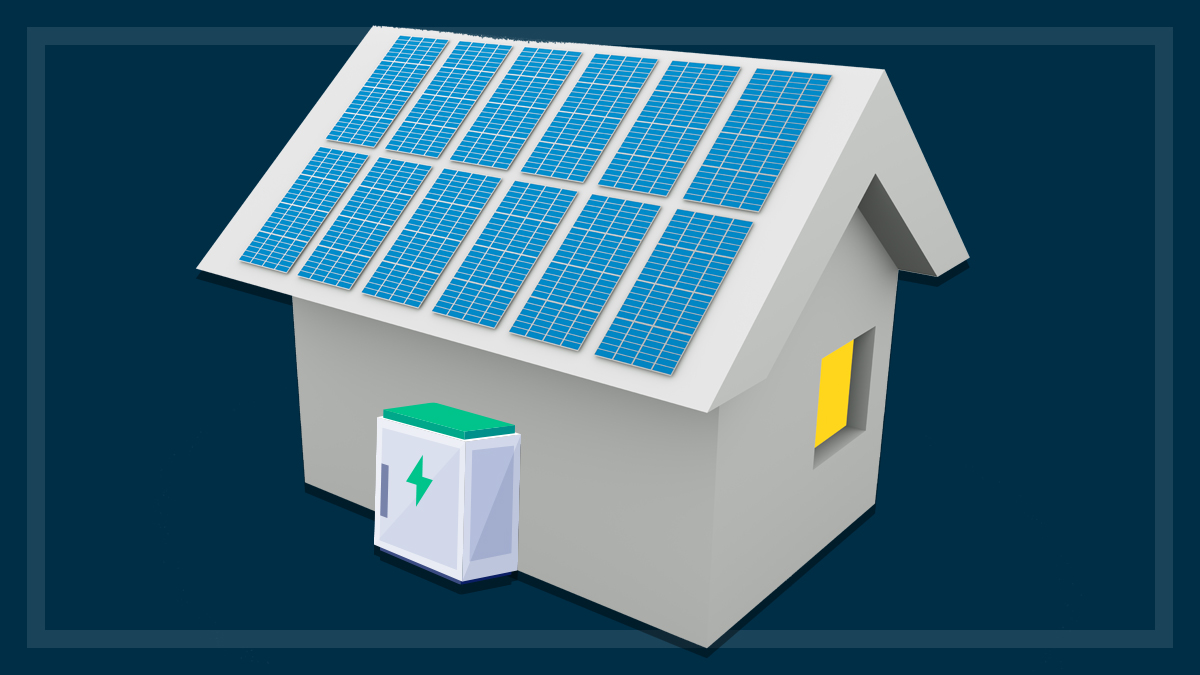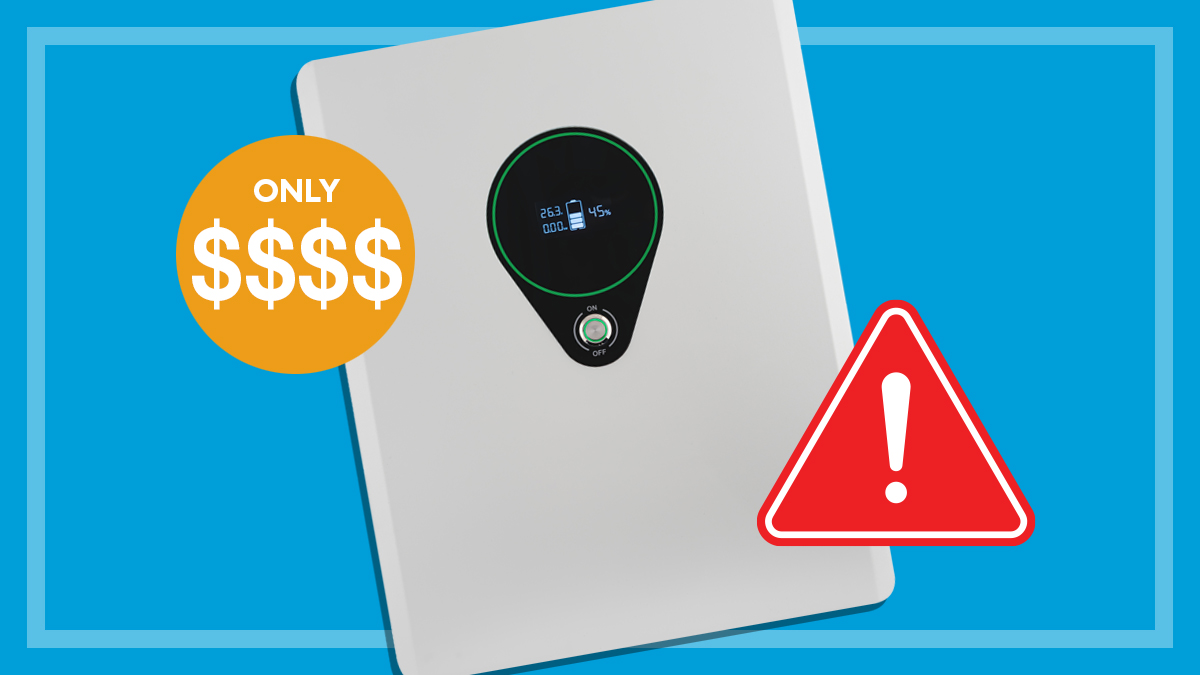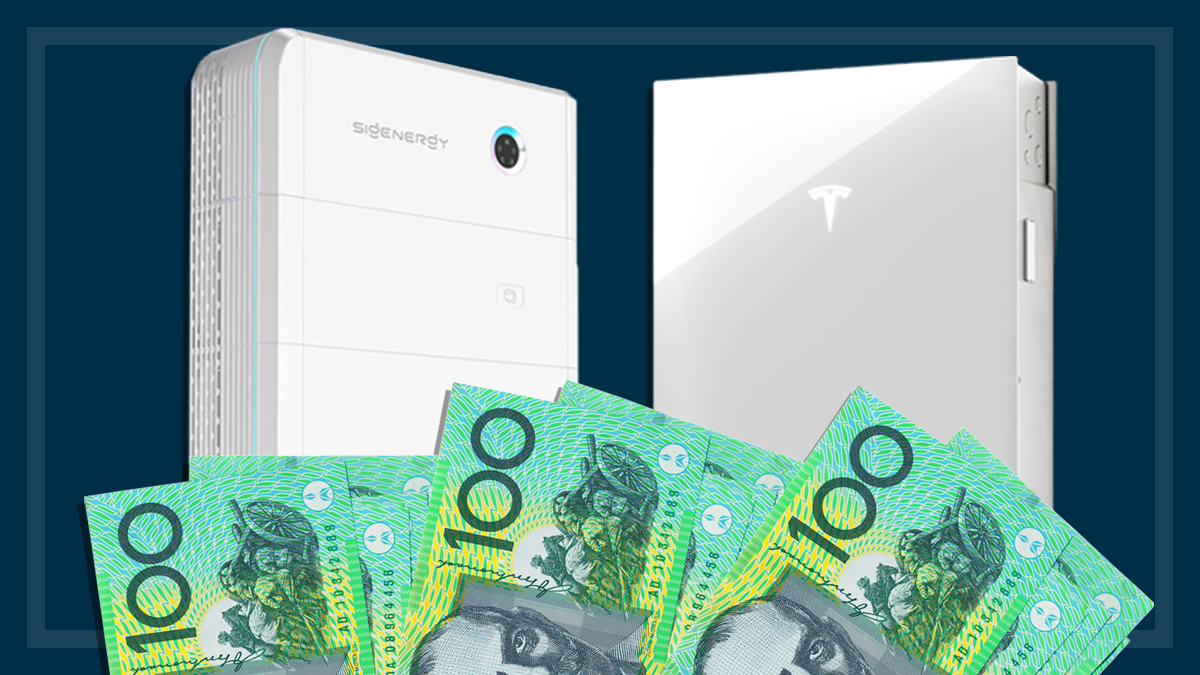Get our independent lab tests, expert reviews and honest advice.
Survey results: Are you happy with your solar panels?
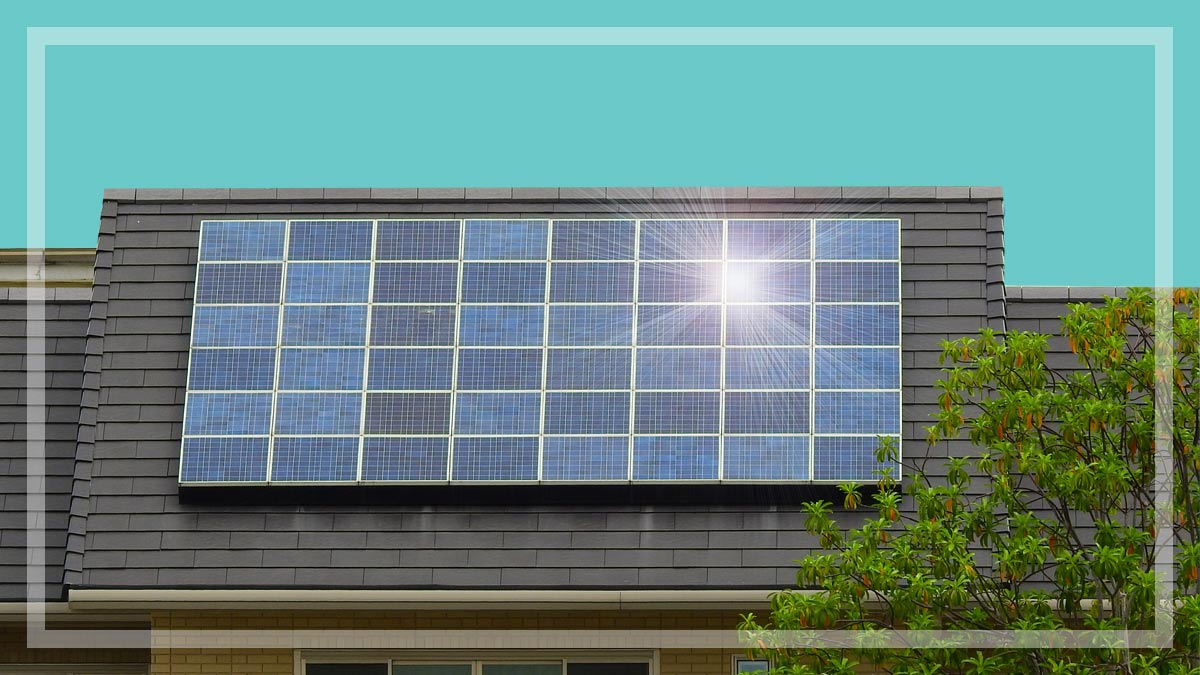
When it comes to choosing the right solar PV (photovoltaic) system for your house, the options are numerous and sometimes confusing.
To help you make sense of what’s available, we’ve comprehensively surveyed more than 1000 CHOICE members across Australia about their experience buying and owning a solar system, so you can learn from their valuable real-life experience.
We ask about the brands they bought, system sizes, the performance of their panels and the inverters, and the issues they may have had with the parts and the installer, among other things.
Need to know
- Customer satisfaction levels are high across most brands of solar systems.
- Independent solar installers generally deliver a better service than Origin.
- One third of respondents have experienced a problem with their system and a similar number have experienced problems with their installer.
Household Solar Survey Results 2018
Households surveyed: 1028
Households with a battery: 9%
Most common installed size in 2017: 6.1kW or more
33% had problems with their system
Most common problem: inverter at 20%
30% had problems with the installer
11% reported less power generated than promised
Incidence of reported problem by installer: Origin (52%), Independent/local installer/electrician (21%)
What kind of solar PV system do you have?
What does the average solar PV system in Australia look like? What size and brand is it? How many systems have batteries and how many are off-grid?
Size
- Around 40% of all systems were over 4kW, with the average size being 4.1kW.
- Bigger systems are growing in popularity. In 2010, the most common size installed was 2kW or less. In 2017–18, it was 6.1kW or more.
Solar panel brands
Respondents had many different brands of solar panels, but the most common brands were:
- Suntech panels, owned by 7% of the respondents
- Trina, owned by 6%
- LG, Jinko and Sunpower, each owned by 5% of respondents.
Inverter brands
Like the panels, there are many different inverter brands in use with none cornering the market. The most common brands were:
- SMA/Sunny Boy (28%)
- Fronius (12%).
Grid connection and batteries
- 96% of respondents are connected to the grid.
- Only 9% have batteries.
- Of those with batteries, 24% had a Tesla, 17% had LG Chem and 11% had Enphase.
Are you happy with your solar system?
The good news is that the vast majority of respondents rated the performance of their panels, inverter and batteries positively.
There was very little difference in satisfaction between the panel brands. However, satisfaction with inverter brands did differ, with Enphase, Fronius and SMA* rating significantly higher than Sunny Boy* and Aurora.
| Inverter brand | Average satisfaction rating (out of 100) |
|---|---|
| Enphase | 90 |
| Fronius | 88 |
| SMA* | 88 |
| Sunny Boy* | 81 |
| Aurora | 79 |
| Other | 79 |
The sample size of battery owners wasn’t large enough to make a comparison between brands.
Are you happy with your solar installer?
We asked our members to rate their satisfaction with their installer. On average, they gave them a rating of 72/100.
- The results show that smaller, independent solar providers are delivering a more reliable service, as they received a rating of 83/100.
- This is significantly higher than the Origin’s rating of 59/100.
- Owners of systems installed after 2016 gave their installers a higher rating than owners of systems installed in 2013 or prior, indicating a lift in standards.
Have you had problems with your solar system?
A whopping one-third of respondents (33%) have experienced problems with their system.
The largest portion (20%) of those problems were with the inverter. Other issues reported were a decline in performance, problems due to a cable or connector, the panels themselves, and the framing or mounting structure.
Inverter issues
Half the people who’ve had a problem with their system have had the inverter replaced.
- 83% of inverter problems happened in the first five years (when they were likely to be under warranty).
- 98% of faulty inverters were replaced within the first nine years.
- Only 3% of Enphase inverter owners reported problems. This is significantly lower than owners of Aurora (17%), Fronius and SMA inverters (both 19%).
Some respondents say they’ve had their inverter replaced multiple times.
Panel issues
The number of problems with panels didn’t differ markedly between brands.
- 79% of panel issues were uncovered when they were between two and nine years old.
Have you had problems with the installer?
A concerningly high 30% of respondents reported having a problem with the installer, and our findings suggest that an independent solar professional is often more reliable than the major players.
- Overall, the most common problem reported (7%) was a significant delay with the installation work.
- 5% had incorrect or faulty wiring.
- People who had their system installed by Origin were more likely to have experienced significant delays (17%) and problems with the installation (52%) than people who had their system installed by an independent / local installer or electrician (3% and 21% respectively).
| Incidence of reported problems with installer or solar companies | |
|---|---|
| Significant delays with the installation work | 7% |
| Incorrect / faulty wiring | 5% |
| Damaged roof | 4% |
| Missing / inadequate documentation & paperwork | 4% |
| Did not honour or facilitate the warranty process | 4% |
| Deviations from original work plan | 3% |
| Panels installed at a sub-optimal location | 3% |
| Inverter installed at an inappropriate location | 3% |
| Using materials different to originally stated | 2% |
| Extra costs not disclosed prior to work commencement | 2% |
| Safety issues (e.g. panels not securely installed) | 1% |
| Incorrect / inappropriate labelling | 1% |
| Other | 13% |
| I have had no problem with the installer | 70% |
Do you know how much power your solar system generates?
It looks like many of us are flying blind when it comes to knowing how productive our systems are.
- 21% of respondents don’t know how much power the system generates for them.
- 12% don’t track the output of the system.
- 46% use their electricity bill to track their solar system’s performance. (Note that your quarterly bill is not a good way to track total system output, as it misses consumption in the home. If the system stops working, you won’t know about it till your next bill.)
- 11% say their system generates less than they were told it would.
- 61% report that their system is generating power close to or the same as what the installer told them it would.
Are payback times in line with what’s been promised?
We asked our members how long it took for their systems to pay for themselves in the real world.
- 53% report being given an estimated payback time of three to 10 years.
- Where the bill savings have paid for the cost of the systems, our respondents say it took an average of five years.
- 47% tell us the payback time was the same or shorter than they were told to expect by the installer; 10% say it was longer.
- Although systems installed in 2012 or earlier are significantly more likely to have paid for themselves by now, more than 28% of these still haven’t done so.
How did you choose your solar company or installer?
The experiences of our respondents confirm that finding a quality, reliable solar company or installer is key to getting a quality system at the right price, with good after-sales support.
Unfortunately, there are solar operators out there who have gone out of business (sometimes voluntarily) and fail to provide after-sales support or honour warranties.
How many quotes did you get?
The majority of respondents showed themselves to be diligent, informed investors, with 61% reporting that they received between two and five quotes before deciding which company to use.
However, 34% didn’t shop around, getting a quote from just one installer.
How did you choose the installer?
- Most respondents (41%) went with the installer that used or recommended quality components.
- 24% say they went with a personal recommendation.
- 22% chose their solar company on price (something we’d caution against).
| Reasons for choosing installer | |
|---|---|
| They used/recommended quality components | 41% |
| Recommended by someone I know | 24% |
| They have good reviews | 24% |
| They offered the cheapest/best value for money deal | 22% |
| They have Clean Energy Council accreditations | 19% |
| Recommended by a solar broker (e.g. Solar Choice) | 10% |
| Other | 31% |
| Don’t know/Can’t remember | 7% |
Did your solar company provide thorough service?
We presented survey respondents with a list of 13 basic services that solar companies should provide, and asked them which services they received.
- On average, respondents say they received eight of these services.
The survey shows installers have improved their professionalism over the years by providing more services, such as recommending a suitable system size and calculating the amount of energy generated by the system.
- For systems installed in 2017 or after, on average nine of the services were delivered.
- For systems installed in 2009 or earlier, it was only seven.
| Service provided by the installer | Percentage of owners who report receiving it |
|---|---|
| Provide all the installation costs in writing | 83% |
| Come to visit and assess your home before work commenced | 77% |
| Recommend a suitable system size | 69% |
| Explain factors that would affect the performance of the solar PV system | 65% |
| Estimate the amount of energy generated by the system | 64% |
| Inform you about the number of RECs/STCs you were eligible for | 63% |
| Provide an installation work plan (e.g. roof plan, timeline) | 62% |
| Inform you about the market price of RECs/STCs | 53% |
| Explain the maintenance of the solar PV system | 51% |
| Check the energy use of your household | 49% |
| Estimate the feed-in tariff rate | 49% |
| Explain the pros and cons of different brands | 37% |
| Estimate the payback time of the system | 36% |
| None of these / Don’t know | 6% |
How do you claim the STC rebates for your solar system?
When buying and installing a residential solar system, rebates come in the form of STCs (small scale renewable energy certificates). These certificates represent a deemed period of renewable energy production from your system and can get you an upfront discount on your solar system.
- 67% of our respondents sold their STCs to the solar company or installer.
- 11% sold them to their electricity provider.
How much?
- Only 16% of the above groups reported what they received, which was on average $44 per STC.
- Of the respondents who could recall the total discount rebate, the average was $3572.
- Only one percent reported trading the STCs by themselves and the average reported price was $38 per STC.
- The results suggest that there’s little value in selling them yourself.
Grid connection difficulties
Just one percent of respondents have had problems with the energy company connecting their system to the grid.
Do you have a solar battery?
Batteries may be hot right now, but 48% of the participants who haven’t bought a solar battery say it’s because they’re too expensive.
- 47% say the technology wasn’t available when they installed the system.
- 14% say it’s more economical to export energy with a feed-in tariff.
The numbers jump when we ask people currently on the grid if they’d like to go off-grid, with 55% saying they’d consider it.
- 86% say it may become more cost-effective to rely on batteries rather than the grid.
- 62% want to avoid grid outages and disruptions.
- 57% want to reduce their greenhouse gas emissions.
Of the respondents who aren’t interested in taking their system off the grid:
- 54% say they wanted access to grid power.
- 51% say their system wouldn’t generate enough power.
- 47% say it’d require significant work or investment to take their existing system off-grid.
- 41% say it’d be too expensive to buy, install and maintain batteries.
- 28% say they want to be able to sell their electricity to energy retailers.
Only 23 respondents live off-grid with batteries, with the main reasons being:
- because the grid wasn’t available in their area
- to avoid outages and disruption
- to reduce their greenhouse gas emissions.
Related
- Four steps to get started with solar
- Which solar panels performed best in our test?
- How we test solar panels
Correction 15/5/2019: The original publication of this article separated the results for SMA and Sunny Boy inverters. These are actually the same brand but survey respondents identified them separately. The survey results have now been combined or kept separate as appropriate, with an explanatory note.

